Apple has added powerful new M2 Pro and M2 Max chips to the 14-inch and 16-inch MacBook Pro. Here's how they stack up versus the M1 Max and M1 Pro models.
Announced on January 17 and available on January 24, the new 14-inch MacBook Pro and 16-inch MacBook Pro models feature many of the same specifications with a few notable upgrades, chiefly the new chips and an advanced HDMI port. The new models can also eke out an extra hour of battery life.
Apple revealed the new devices in three press releases, although the company also has a YouTube video that is set up like a traditional keynote. Here is how the new MacBook Pro models stack up against the version released in 2021.
2023 MacBook Pro versus 2021 MacBook Pro - Specifications
| Specifications | 2021 MacBook Pro | 2023 MacBook Pro |
|---|---|---|
| Price (starting) | $1,999, $2,499 | $1,999, $2,499 |
| Display size (inches) | 14.2, 16.2 | 14.2, 16.2 |
| Dimensions (inches) | 0.61 x 12.31 x 8.71 0.66 x 14.01 x 9.77 | 0.61 x 12.31 x 8.71 0.66 x 14.01 x 9.77 |
| Weight (pounds) | 3.5, 4.7 | 3.5, 4.7, 3.6 (M2 Max), 4.8 (M2 Max) |
| Max Resolution (pixels) | 3024 x 1964, 3456 x 2234 | 3024 x 1964, 3456 x 2234 |
| Pixel Density | 254 | 254 |
| Brightness | XDR: 1000 nits sustained, 1600 nits peak SDR: 500 nits max | XDR: 1000 nits sustained, 1600 nits peak SDR: 500 nits max |
| Display Backlighting | Mini LED | Mini LED |
| Display Technology | Wide Color P3, True Tone, ProMotion | Wide Color P3, True Tone, ProMotion |
| Processors | Up to M1 Pro 10-core, M1 Max 10-core | Up to M2 Pro 12-core, M2 Max 12-core |
| Memory | 16GB, 32GB, 64GB (M1 Max) | 16GB, 32GB, 64GB (M2 Max), 96GB (M2 Max) |
| Storage | 512GB, 1TB, 2TB, 4TB, 8TB | 512GB, 1TB, 2TB, 4TB, 8TB |
| Battery | Up to 17 hours (14-inch), up to 21 hours (16-inch) | Up to 18 hours (14-inch), up to 22 hours (16-inch) |
| Biometrics | Touch ID | Touch ID |
| Trackpad | Force Touch | Force Touch |
| Keyboard | Backlit with ambient light sensor | Backlit with ambient light sensor |
| Ports | Three Thunderbolt 4 (USB-C) HDMI port SDXC card slot 3.5mm headphone jack | Three Thunderbolt 4 (USB-C) Advanced HDMI port SDXC card slot 3.5mm headphone jack |
| Webcam | 1080p FaceTime HD camera | 1080p FaceTime HD camera |
| Audio | High-fidelity six-speaker sound with force-cancelling woofers Spatial Audio Dolby Atmos Three mic array | High-fidelity six-speaker sound with force-cancelling woofers Spatial Audio Dolby Atmos Three mic array |
| Connectivity | 802.11ax Wi-Fi 6, Bluetooth 5.0 | 802.11ax Wi-Fi 6E, Bluetooth 5.3 |
| Charger | Starts at 67W USB-C | Starts at 67W USB-C |
| Color | Silver, Space Gray | Silver, Space Gray |
MacBook Pro with M2 Max & M2 Pro versus 2021 MacBook Pro - Design, Size, Weight
The 2021 and 2023 14-inch MacBook Pro dimensions are 0.61 inches by 12.31 inches by 8.71 inches, with a weight of 3.5 pounds. Meanwhile, the 2021 and 2023 16-inch model come in at 0.66 inches by 14.01 inches by 9.77 inches and weighs 4.7 pounds.
Choosing an M2 Max on a 2023 MacBook Pro will result in a device that weighs 3.6 pounds.
Each MacBook Pro comprises 100% recycled aluminum in the enclosure and uses 100% recycled rare earth elements in all magnets. The main logic board uses 100% recycled tin in the soldering, and multiple components use 35% or more recycled plastic.
2023 MacBook Pro versus 2021 MacBook Pro - Display
The resolution of the 2021 14-inch MacBook Pro was 3,024 by 1,964 pixels, and the 16-inch model was 3,456 by 2,234 pixels. The 2023 MacBook Pro models have the same number of pixels, and the old and new models have a density of 254 pixels per inch.
Both the new and older models sport a mini LED Liquid Retina XDR technology for the screen. It lets professionals use preset reference modes that set the color space, white point, gamma, and brightness on display. Professionals can also create custom reference modes.
The backlighting on all models provides brightness at 1,000 nits sustained full-screen and 1,600 nits at peak for HDR content. SDR brightness for the 2021 and 2023 MacBook Pros tops at 500 nits, and contrast ratios reach 1,000,000:1. The P3 wide color gamut supports one billion colors for smoother gradients.
The display on each model is ProMotion, meaning it can automatically adapt its refresh rate up to 120Hz or lower levels when necessary to conserve power.
The displays on every model also include True Tone, a technology that automatically adapts the display based on ambient lighting conditions to make colors appear consistent in different environments.
2023 MacBook Pro versus 2021 MacBook Pro - Processor
The base configuration of the M1 Pro chip had up to ten cores of CPU power, with eight performance cores and two efficiency cores. The integrated GPU provided up to 16 cores and 200GB/s of memory bandwidth, and all three configuration options offered a Neural Engine component with 16 cores.
The M1 Max had two configurations, starting with ten cores of CPU and 24 GPU cores, and customers could opt for an alternative configuration with a 32-core GPU. Similar to the M1 Pro, both configurations for the M1 Max came with a 16-core Neural Engine. It also featured 400GB/s of memory bandwidth.
Meanwhile, the powerful M2 Pro chip can offer up to a 12-core CPU and 19-core GPU and delivers up to 32GB of unified memory. It also features 200GB/s of unified memory bandwidth.
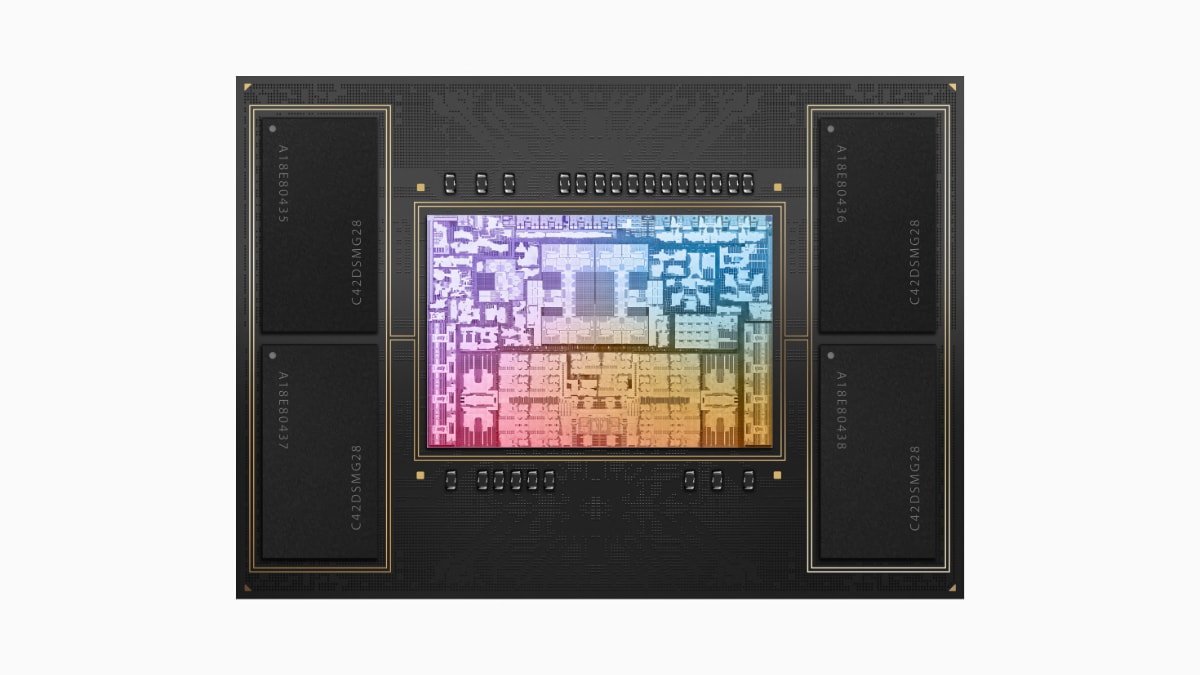 The powerful M2 Pro chip can offer up to a 12-core CPU and 19-core GPU and delivers up to 32GB of unified memory
The powerful M2 Pro chip can offer up to a 12-core CPU and 19-core GPU and delivers up to 32GB of unified memoryM2 Pro has 40 billion transistors, almost 20% more than the M1 Pro. It has up to eight high-performance cores and four high-efficiency cores, which results in CPU performance up to 20% faster than a 10-core CPU in M1 Pro.
The more powerful M2 Max chip has 67 billion transistors — which is 10 billion more than M1 Max and over three times that of M2, with a 12-core CPU. It has 400GB/s of unified memory bandwidth and supports up to 96GB of unified memory.
Both M2 Pro and M2 Max include Apple's next-generation, 16-core Neural Engine, capable of 15.8 trillion operations per second, and it's up to 40% faster than the previous generation.
M2 Pro supports hardware-accelerated H.264, HEVC, and ProRes video encoding and decoding. In contrast, the M2 Max features two video encode engines and two ProRes engines, bringing video encoding that is twice as fast as M2 Pro.
For reference, the M1 Pro and M1 Max also had Media Engines for ProRes video encoding and decoding.
According to Apple's testing, expect about a 20% speed boost from M1 Max to M2 Max, or M1 Pro to M2 Pro.
In our tests, the single-core score jumped from 2376 to 2558 on the single-core Geekbench 6 benchmark, and the multi-core improved from 12359 to 13321. Only about an 8% improvement.
2023 MacBook Pro versus 2021 MacBook Pro - Graphics
Apple didn't offer a discrete GPU for the Apple Silicon MacBook Pro. Instead, it used a 14-core or 16-core GPU integrated into the M1 Pro chip and a 24-core or 32-core GPU inside the M1 Max variant.
The GPU in M2 Pro can be configured with up to 19 cores — three more than the GPU in M1 Pro — and includes a larger L2 cache. As a result, graphics speeds are up to 30% faster than the M1 Pro.
The M2 Max supports up to a 38-core GPU and features a larger L2 cache, with graphics speeds up to 30% faster than M1 Max.
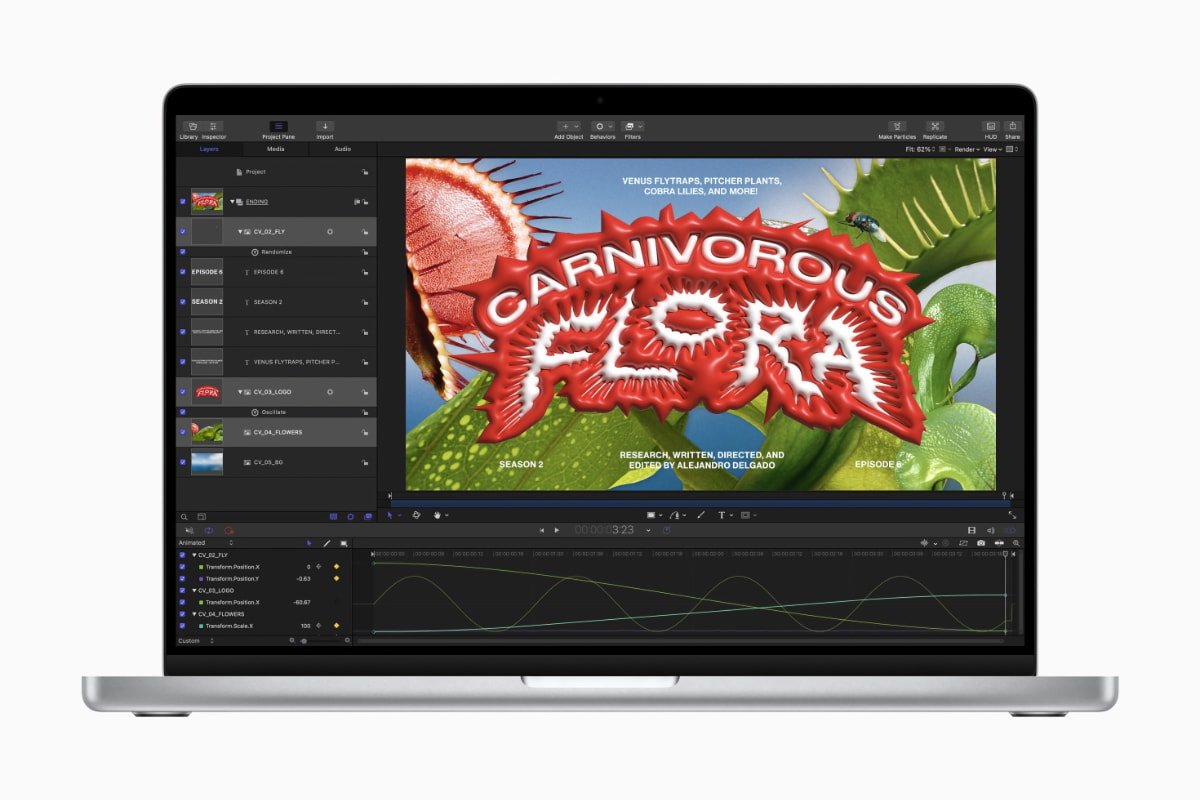 With M2 Pro, animations in Motion render 80 percent faster than the Intel-based MacBook Pro, and 20 percent faster than the previous generation
With M2 Pro, animations in Motion render 80 percent faster than the Intel-based MacBook Pro, and 20 percent faster than the previous generationThe M1 Pro could output to two external 6K monitors at up to 60Hz. However, the M1 Max went much further in driving three 6K displays and an extra 4K screen at 60Hz.
Display support for the M2 Pro includes up to two external monitors with up to 6K resolution at 60Hz over Thunderbolt, or one with up to 6K at 60Hz over Thunderbolt and one with up to 4K at 144Hz over HDMI. Another option is one external display with 8K at 60Hz over Thunderbolt, or one external display at 4K resolution at 240Hz over HDMI.
The M2 Max can drive up to four external displays — up to three with 6K at 60Hz over Thunderbolt, and one up to 4K at 144Hz over HDMI. Another configuration for the M2 Max is three external displays — two at 6K resolution at 60Hz over Thunderbolt, and one up to 8K at 60Hz or 4K at 240Hz over HDMI.
In our graphics testing, under Geekbench 6's Metal Compute test for the GPU, it climbed 15% from 114488 on the 32-core M1 Max to 134293 on the 38-core M2 Max.
2023 MacBook Pro versus 2021 MacBook Pro - Camera
Each model in the 2021 and 2023 MacBook Pro lineup includes a 1080p webcam. Using the M1 image signal processor and the Neural Engine, the 2021 MacBook Pro enhanced the sharpness and overall video quality.
The 2021 MacBook Pro introduced a notch in the display that houses the camera, and the 2023 MacBook Pro models are no different.
2023 MacBook Pro versus 2021 MacBook Pro - Storage, Connectivity, Power
The MacBook Pro lineup has a wide range of storage options, starting at 512GB and going up to 8TB on the 2021 and 2023 models. Each model also features three USB-C Thunderbolt 4 ports with support for charging, DisplayPort, Thunderbolt 4 up to 40Gb/s, and USB 4 up to 40Gb/s.
MagSafe 3 is a magnetically-affixed charger that can quickly disconnect from the MacBook Pro, preventing it from going flying if someone trips over the cable. And, the cables are now color-matched on the 2023 model.
Connectivity on the 2021 MacBook Pro models is Wi-Fi 6 (802.11ax) and Bluetooth 5.0, while the 2023 models feature Wi-Fi 6E (802.11ax) and Bluetooth 5.3, which we first saw in the iPhone 14 line, Apple Watch Series 8, and Apple Watch Ultra.
The 2021 14-inch MacBook Pro provided up to 17 hours of video playback, while the 16-inch model got up to 21 hours of video playback. At the time, Apple said this was the most extended battery life ever on a Mac laptop.
The 2023 14-inch MacBook Pro battery offers up to 18 hours of video playback, and up to 22 hours on the 2023 16-inch MacBook Pro. Apple tested video playback and battery using a 16-inch MacBook Pro with an M2 Pro that had a 12-core CPU and 19-core GPU, 16GB of memory, and a one terabyte SSD.
By playing HD 1080p content in the Apple TV app with the display brightness set to eight clicks from the bottom, Apple discovered the battery life, though it can vary by use and configuration.
2023 MacBook Pro versus 2021 MacBook Pro - Other features
The Apple Silicon MacBook Pros have a Force Touch trackpad and a backlit Magic Keyboard. However, just like the 2021 MacBook Pro, the 2023 models don't have a Touch Bar, and they do have a dedicated Touch ID button in the top-right corner of the keyboard.
For audio, the two generations use a trio of "studio-quality" mics in an array with a high signal-to-noise ratio and directional beamforming. Each model has a high-fidelity six-speaker sound system with force-canceling woofers.
The sound system supports wide stereo sound, spatial audio, and Dolby Atmos. The 3.5mm headphone jack has advanced support for high-impedance headphones. Additionally, the HDMI port supports multichannel audio output on the 2023 MacBook Pro.
The 2021 MacBook Pro also included an HDMI port but it didn't support multichannel audio output.
2023 MacBook Pro versus 2021 MacBook Pro - Pricing
The prices have not changed with the 2023 MacBook Pro. The 14-inch model starts at $1,999 with a 10-core CPU and 16-core GPU M2 Pro on the base configuration. The 16-inch 2023 MacBook Pro starts at $2,499 with a 12-core CPU and 19-core GPU on an M2 Pro.
Customers buying the 2023 14-inch MacBook Pro can upgrade to an M2 Pro with a 12-core CPU and 19-core GPU, which adds $300 to the total price. Choosing an M2 Max with a 12-core CPU and 30-core GPU adds $500.
Additionally, the new 14-inch MacBook Pro has an option for an M2 Max with a 38-core option at $700. The 16-inch version also has two upgrade options for an M2 Max: a 30-core GPU that costs $200 and a 38-core GPU version that adds $400. Every chip has a 12-core CPU and 16-core Neural Engine.
The M2 Max chip can handle up to 96GB of memory, which adds an extra $1,200 to the price of the 14-inch 2023 MacBook Pro. Or, customers can choose 64GB for an additional $800 or 32GB for $400.
Increasing the storage on the 2021 and 2023 MacBook Pros from 512GB to 1TB is an extra $200, and moving to 2TB costs $600 from the base capacity. Going to 4TB adds $1,200 to the bill and $2,400 to max out the storage at 8TB.
Buyers of the 2023 14-inch MacBook Pro can upgrade to a 96W USB-C power adapter that adds $20 to the bill. It's included as a free upgrade with a selection of M2 Pro with a 12-core CPU or M2 Max.
The new 16-inch model comes with a 140W USB-C power adapter without an option to choose a different version.
2023 MacBook Pro versus 2021 MacBook Pro - Which to Buy?
For new and existing Apple customers, the 2023 MacBook Pro is a worthy upgrade from the older 2021 version. With an M2 Pro, Mac developers can compile in Xcode up to 2.5 times faster than the fastest Intel MacBook Pro and up to 25% faster than the M1 Pro.
Image processing in Adobe Photoshop is up to 80% faster than the fastest Intel-based MacBook Pro and up to 40% faster than M1 Pro, a boon for photographers.
Meanwhile, the M2 Max can render effects in Cinema 4D up to six times faster than the fastest Intel-based MacBook Pro and up to 30% faster than the previous generation. Additionally, color-grading in DaVinci Resolve on the same chip is twice as fast as the fastest Intel-based MacBook Pro and up to 30% faster than the previous generation.
2023 MacBook Pro versus 2021 MacBook Pro - Where to Buy
Closeout MacBook Pro deals are in effect on the Late 2021 models, with discounts at press time reaching up to $500 off.
The new 2023 MacBook Pros can be ordered at Apple resellers, including BHPhotoVideo.com, Adorama.com and Amazon.com. You can compare prices and check availability in our Price Guides via the jump links below.
 Andrew Orr
Andrew Orr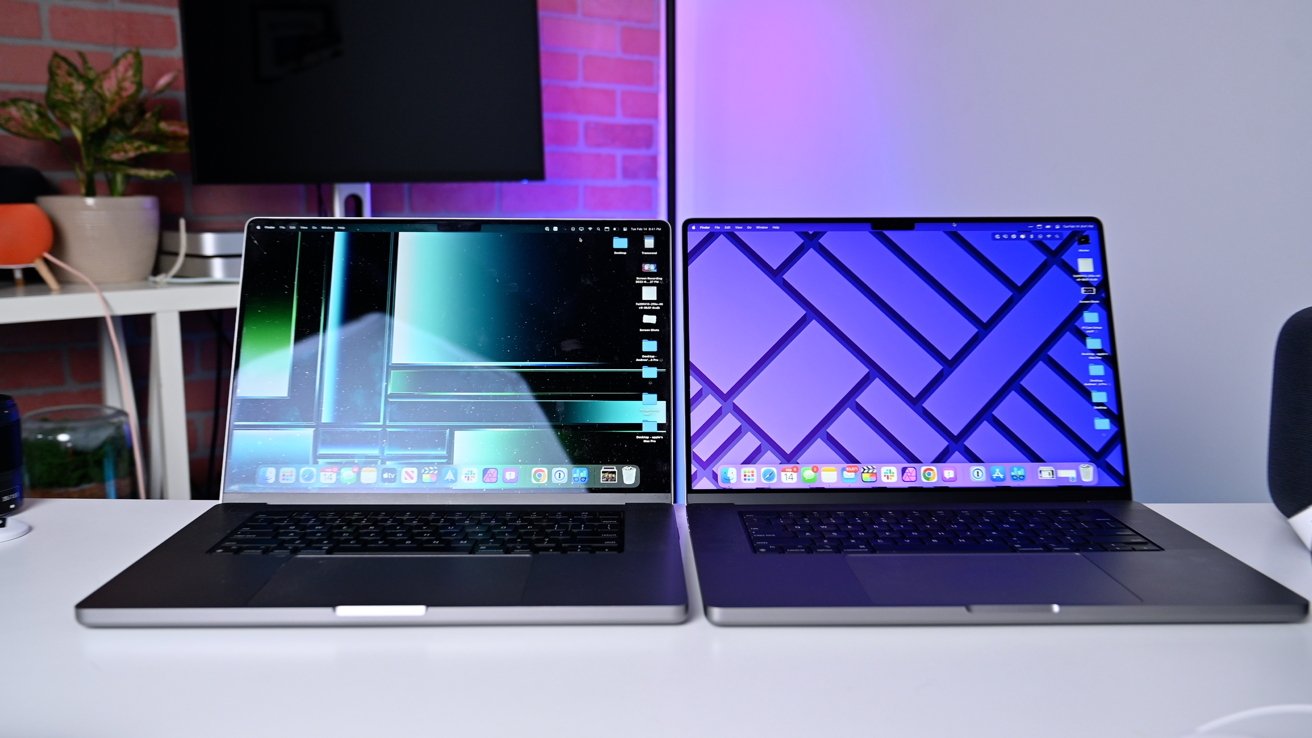




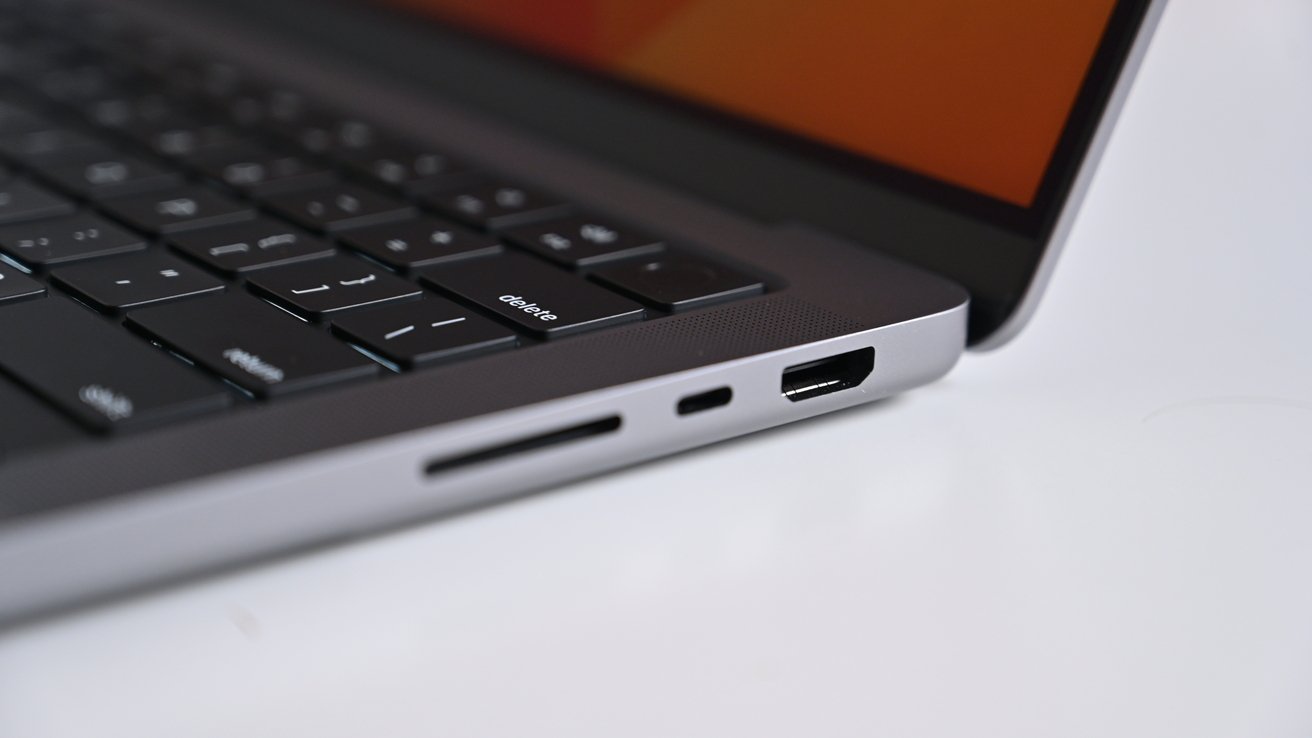

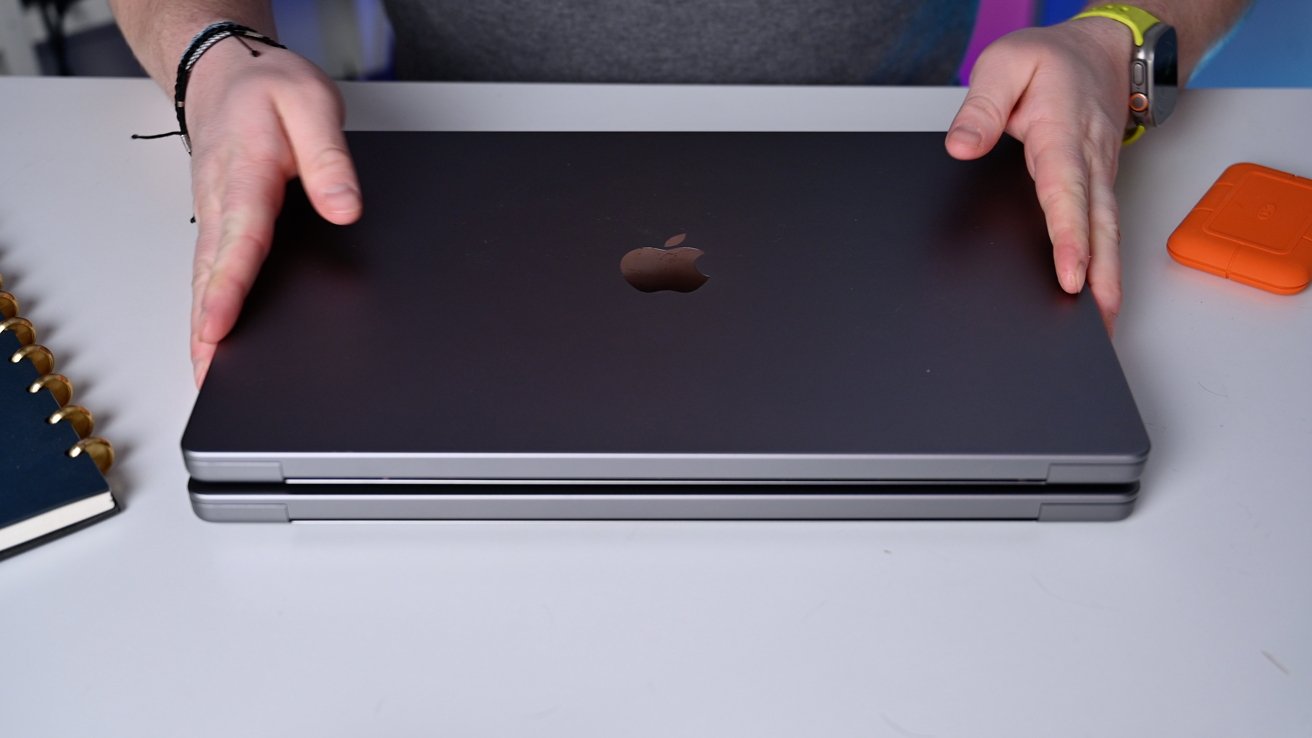

-m.jpg)





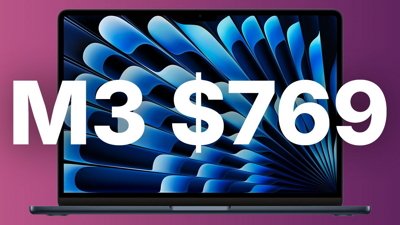
 Christine McKee
Christine McKee
 William Gallagher
William Gallagher
 Thomas Sibilly
Thomas Sibilly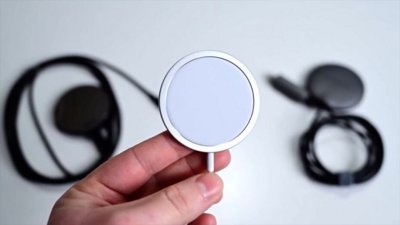
 Andrew O'Hara
Andrew O'Hara
 Amber Neely
Amber Neely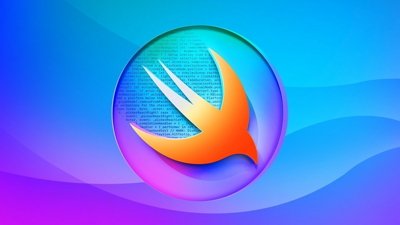
 Marko Zivkovic
Marko Zivkovic
 Malcolm Owen
Malcolm Owen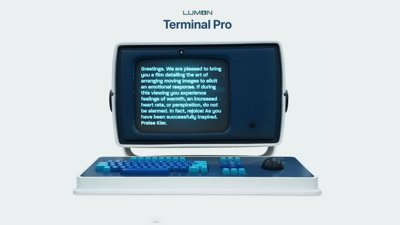
 William Gallagher and Mike Wuerthele
William Gallagher and Mike Wuerthele









8 Comments
Let me guess. It’s faster.
Faster, but since I'm currently rocking an M1 Max I'll wait for a M3 on 3nm.
So… can these notebooks finally output to an 8k movie motor or no?